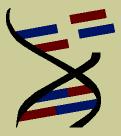
Genome Project Solutions
Jeffrey Boore is co-author on a manuscript published by the journal BMC Genomics that reports the complete sequence of the Hox clusters of the cichlid fish Astatotilapia burtoni. The project was led by Axel Meyer of the University of Constance.
The citation of the manuscript is: Hoegg, S., J. V. Kuehl, J. L. Boore, and A. Meyer, 2007 Comparative phylogenomic analyses of teleost fish Hox gene clusters: lessons from the cichlid fish Astatotilapia burtoni. BMC Genomics 8: 317.
Abstract from the manuscript:
Comparative phylogenomic analyses of teleost fish Hox gene clusters: Lessons from the cichlid fish Astatotilapia burtoni: Teleost fish have seven paralogous clusters of Hox genes stemming from two complete genome duplications early in vertebrate evolution, and an additional genome duplication during the evolution of ray-finned fish, followed by the secondary loss of one cluster. Gene duplications on the one hand, and the evolution of regulatory sequences on the other, are thought to be among the most important mechanisms for the evolution of new gene functions. Cichlid fish, the largest family of vertebrates with about 2500 species, are famous examples of speciation and morphological diversity. Since this diversity could be based on regulatory changes, we chose to study the coding as well as putative regulatory regions of their Hox clusters within a comparative genomic framework. We sequenced and characterized all seven Hox clusters of Astatotilapia burtoni, a haplochromine cichlid fish. Comparative analyses with data from other teleost fish such as zebrafish, two species of pufferfish, stickleback and medaka were performed. We traced losses of genes and microRNAs of Hox clusters, the medaka lineage seems to have lost more microRNAs than the other fish lineages. We found that each teleost genome studied so far has a unique set of Hox genes. The hoxb7a gene was lost independently several times during teleost evolution, the most recent event being within the radiation of East African cichlid fish. The conserved non-coding sequences (CNS) encompass a surprisingly large part of the clusters, especially in the HoxAa, HoxCa, and HoxDa clusters. Across all clusters, we observe a trend towards an increased content of CNS towards the anterior end. The gene content of Hox clusters in teleost fishes is more variable than expected, with each species studied so far having a different set. Although the highest loss rate of Hox genes occurred immediately after whole genome duplications, our analyses showed that gene loss continued and is still ongoing in all teleost lineages. Along with the gene content, the CNS content also varies across clusters. The excess of CNS at the anterior end of clusters could imply a stronger conservation of anterior expression patters than those towards more posterior areas of the embryo.
BACK to News and Publications
